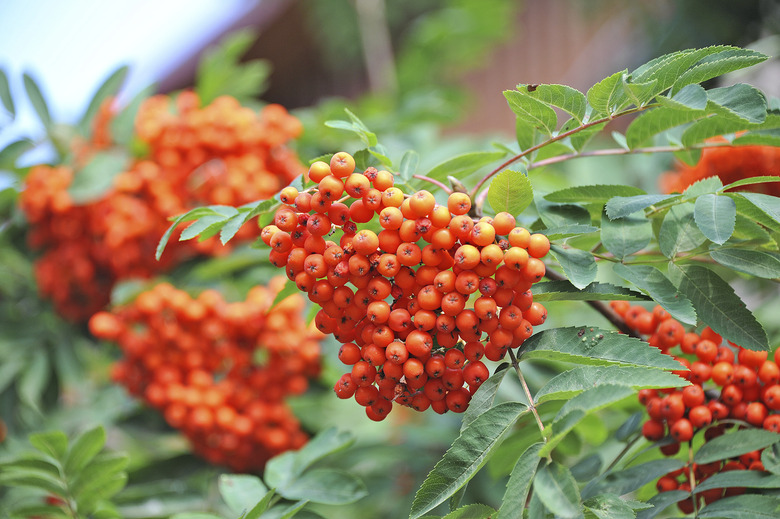In What Zones Does A Rowan Tree Grow?
What Europeans call rowan tree, most North Americans know as European mountain-ash (Sorbus aucuparia). This feature-filled, ornamental tree is hardy in U.S. Department of Agriculture plant hardiness zones 3 through 7, where climate and related conditions fit its natural preferences. When stressed, the slow-growing, short-lived rowan tree suffers from diseases and pests, but given the cool, moist zones it prefers, the tree thrives — particularly in the Northeast and Northwest.
Cool-Summer Climates
Native to northern Europe and western Asia, rowan tree finds a welcoming climate across the northern United States and Canada and has naturalized extensively along the northern coasts and near-inland areas. Rowan tree's lack of heat tolerance limits its use in warmer climates. The tree prefers full sun and won't tolerate northern shade, but demands afternoon shade in the southern limits of its USDA zones. Even the Midwest's hot summer stresses restrict its use too far south. As its common name suggests, European mountain-ash flourishes in foothills and higher elevations that spare it from summer daytime heat.
Plentiful Precipitation
Rowan tree won't withstand soggy, waterlogged soil, but the tree has even less tolerance for drought conditions. Throughout its USDA zones, summer rains pair with winter precipitation to keep rowan roots cool and consistently moist. They respond with healthy development that supports the tree as it matures to 40 feet tall and spreads of 25 feet or more. Northern coastal areas with abundant precipitation and humidity fit rowan tree especially well. It struggles in areas with limited rainfall and requires regular, thorough watering during drought.
Soil pH Preferences
The higher rainfall found in rowan tree's USDA zones often promotes acidic soil pH. Over time, heavier rainfall washes away the soil elements that normally limit soil acidity. Not surprisingly, rowan tree adapts readily to noncompacted soils ranging from clay and loam to sand, but it prefers highly acidic to slightly alkaline soil in the pH range of 4.5 to 7.5. Rowan tree's preferred soil nutrients remain available in greater quantities at these lower pH levels found throughout much of its growing zones. The tree has only moderate toleration for saline soils and sea or road-salt sprays.
Winter Chilling
Gardeners value rowan trees for their 3- to 5-inch, cream-white flower clusters, multicolored fall foliage and the prolific, orange-red fruit that the British enjoy for jams. But those features falter without reliably cold winters. Unlike plants that look to day length for dormancy signals, rowan trees rely on temperature. Lack of winter chill disturbs the tree's shallow dormancy and throws off cues to enter and end its dormant period. Like its relative the domestic apple (Malus domestica), hardy in USDA zones 3 through 8, the timing, quantity and quality of rowan tree's flowers and fruit depend on the winter chilling its USDA zones provide.
References
- North Dakota State University Agriculture: European Mountain-Ash
- Cal Poly San Luis Obispo Urban Forest Ecosystems Institute: European Mountain Ash Sorbus Aucuparia
- University of Illinois Extension: Ask Extension: Rowan Tree
- Virginia Tech Department of Forest Resources and Environmental Conservation: European Mountain-Ash
- Oxford Journals: Journal of Experimental Botany: Temperature Rather Than Photoperiod Controls Growth Cessation and Dormancy in Sorbus Species
- The Samuel Roberts Noble Foundation: Understanding and Correcting Soil Acidity
- The Old Farmer's Almanac: Apples
